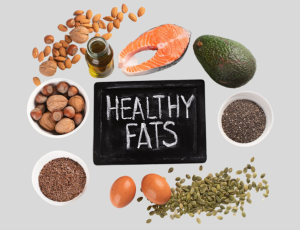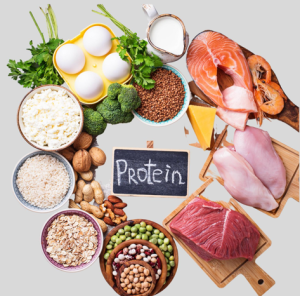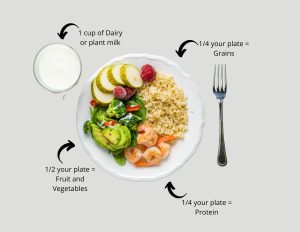Recognizing the diversity of our bodies and dietary preferences, it’s important to acknowledge that there isn’t a universal diet suitable for all. Our nutritional needs are influenced by a multitude of factors like genetics, metabolism, cultural background and health conditions. This diversity highlights the importance of tailoring our eating patterns to meet our own needs. While there is not a “one size fits all” diet that suits everyone, there are general guidelines when it comes to adopting a healthy eating pattern to help people achieve and maintain good health and reduce the risk of chronic disease.
Following the acceptable macronutrient distribution range (AMDR) for carbohydrate, protein and fat can be a general healthful guideline because these ranges are designed to ensure that we are getting an appropriate balance of nutrients for overall health.
![]()
Prioritizing a healthy eating pattern consisting of a variety of fruits, vegetables, lean proteins and whole grains forms a solid foundation. Remember, macronutrients are essential nutrients that our bodies need in relatively large amounts to function properly and maintain overall health. There are 3 main types:

Carbohydrates: Primary source of energy for the body. Broken down into glucose (sugar, the body’s preferred fuel source that is used by cells for energy. There are 3 types of carbohydrates:
-Starches: present in plant-based foods such as potatoes, corn, peas, beans, rice and other grain products
-Sugars: occur naturally in foods such as fruit, milk, but there are sources of added sugars found in highly processed foods such as candy, cake and soft drinks
-Dietary Fiber: an indigestible part of plant food that may help with digestive and heart health. AMDR range: 45-65% of your total daily calories should come from carbohydrates.

Fat: Plays role in storing energy, protecting organs, balancing hormonal health and aid in the absorption of vitamins A, D, E and K. Healthy sources of fat include avocados, nuts seeds and oils
AMDR range: fat is 20-35% of total daily calories to come from healthy fats, such as polyunsaturated and monounsaturated fats, and fewer than 10% of calories per day from saturated fats.

Protein: Proteins play a vital role in building and repairing tissues, produce enzymes and hormones, support immune functions and more. Protein rich foods include meat, eggs, poultry, fish, dairy products, beans, legumes and nuts.
AMDR range: protein is 10-35% of total daily calories.
![]()
Using the AMDR and the USDA MyPlate as a framework is a good way to ensure you are including a variety of food sources to meet all your nutrient needs. Here find the visual representation on how create a healthy plate:

If you find yourself wanting to adopt a healthier eating pattern, aim to create small and realistic goals for yourself! Whether that be adding in a piece of fruit at lunch, or adding some greens to your protein smoothie! The key is focusing on what you can add to your plate, instead of taking away something. Remember the journey to a healthier you is uniquely yours, and adapting your diet to suit your body’s requirements is a positive stride towards overall well being.
Healthy regards, Cassandra RDN
Medical Advice Disclaimer: The information provided on this blog is for informational and educational purposes only. No material provided in this blog, including images and graphics, is intended as a substitute for professional medical advice, diagnosis, or treatment. Always seek the advice of your physician or other qualified health care provider before making any dietary changes or starting a new health care regimen. Do not neglect professional advice because of what you may have read in this blog.
References:
Learn how to eat healthy with MyPlate. Available at: https://www.myplate.gov/



